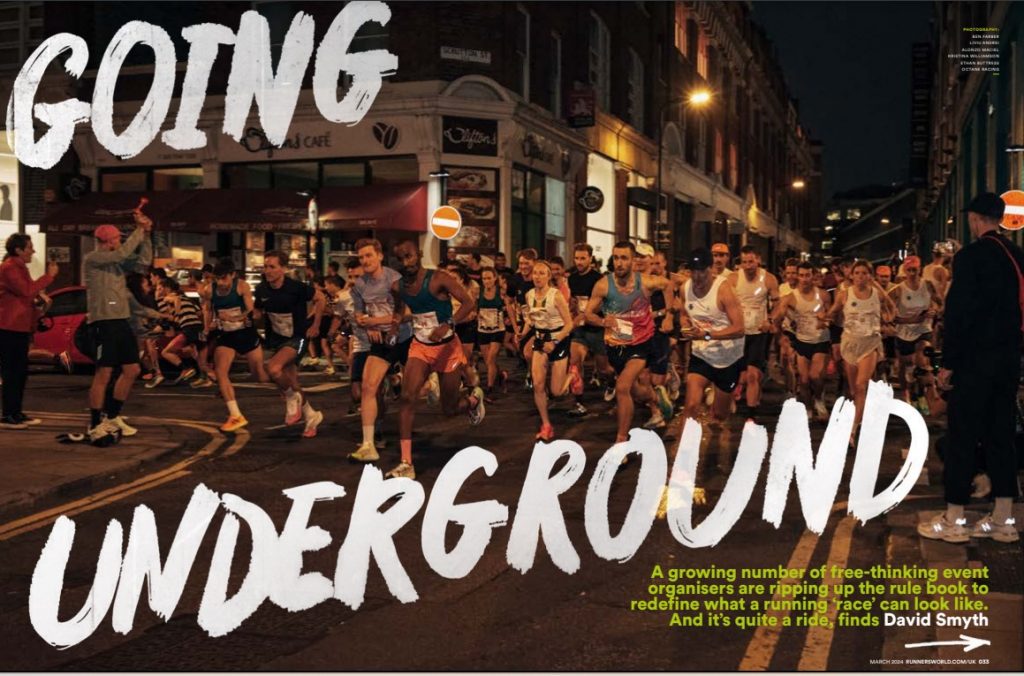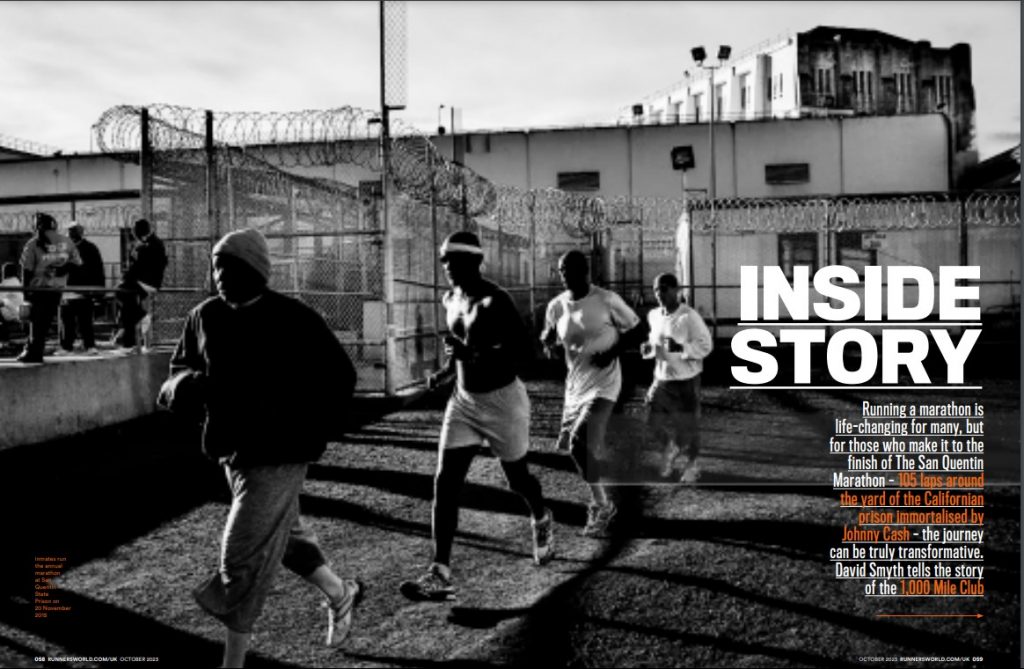Telling everybody you know that you’re planning to run a marathon in less than three hours is a bit like telling everyone you’re writing a novel: they’ll keep asking you about it every time they see you and it will be embarrassingly obvious that you haven’t done it. But a pointless running goal shared is a pointless running goal halved, right? So here I am in print, telling an even wider audience that I’m aiming to run the 2016 London Marathon in 2:59:59 at least. Anything with a “3” in front of it will be devastating.
I say “pointless” because there’s no practical need to run 26.2 miles in less than 180 minutes. To secure a “Good for Age” place at London, if you’re a man under 40, you need to have run a marathon in less than 3:05. If you’re between 40 and 50, it’s 3:15.
And even those numbers are fairly arbitrary. London only changed its qualifying time for under-40s from 3:15 to 3:05 in 2013, but in earlier days it was 2:45. “The GFA system is a mechanism that allows us to take the maximum number of runners into the event, and the best runners of all ages,” says Event Director Hugh Brasher. “The qualifying times have no bearing on what people would like to run, or aspire to run, since our experience is that every runner has their own goal.”
So why go for under three hours? “It’s daft, isn’t it, really,” says Jonathan Bean, a 30-year-old charity worker from Southampton who managed sub-three on his fifth attempt, finishing the Seville Marathon in 2:59:12 in 2015. “But it’s about how you want to identify yourself. To do three hours and one second would feel vastly less satisfying than doing 2:59:59.”
He’s right that there’s just something inherently pleasing about the number. It’s a crossing of a crevasse, in the same way that the 60 seconds either side of midnight on New Year’s Eve feels like a far more significant passage of time than the everyday ticking away of the minutes of your life. Round numbers are more satisfying to break, so maybe you’ve also aimed to come in under 20 minutes for a 5k, 40 minutes for a 10k, and perhaps 1:30 for a half marathon. But a sub-three marathon is a lot harder, and therefore a lot more rewarding.
Having a “2” in front of your marathon PB would feel like a promotion to the Premier League, putting you, however tenuously, in the same class as World Record holder Dennis Kimetto (2:02:57) rather than the masses who can manage 3:59 and under. At London last year, of the 37,604 participants in the main Club, Charity and Ballot category, just 1,891 – that’s five per cent – completed the course in less than three hours. It’s definitely an elite club to join.
Everyone I speak to has different ideas about how sub-three can be achieved, but one thing we’re all agreed on is that it isn’t easy. “Going sub-3 is where things get a little more technical,” says Will Usher, Head Coach at Precision Coaching, who helps Gordon Ramsay to get round Iron Man races among other challenges. During training, he prescribes a long run, a short interval set (short fast distances but lots of them), a longer interval set (High quality longer distances, as hard as you can), and a tempo run at the pace you intend to run the marathon, plus ideally a strength and conditioning session such as pilates, and a recovery session of cycling perhaps. Of all of these, he would avoid putting too much focus on the long run.
“People get so hung up on mileage. It’s definitely overrated,” he tells me. He prefers to think about time rather than distance. “If you’re targeting three hours or just below, you should work up to about 45 minutes off your target time, so a 2:15 longest run. Starting at something like an hour and building up by five minutes a week would be great, but 10 minutes a week is probably the norm.”
The other key issue is diet, most notably a switch to encouraging your body to burn fat as fuel rather than carbohydrates. “You have so many fat cells sitting in your body – you’re not going to run out like you do with glycogen,” says Dr Krista Austin of Performance & Nutrition Coaching in the US. “On long training runs with my athletes, we’ll pull back on the carbs to train the body to deal with as much glycogen depletion as possible and burn fat instead.” Uncomfortable training runs on very little fuel are used to push your metabolism. Then, three days prior to your race, Austin advises switching to high-glycemic carbs that are low in fibre. “This is when you can have the gummi bears and the white rice. There are muscular benefits and there are mental benefits.”
During the race itself, Austin suggests two-thirds of a gel every 5k, while Usher proposes a gel every 10k. If you’ve maintained a steady pace, not going off too fast, and fuelled regularly rather than waiting until you feel like you need it, you shouldn’t hit the dreaded wall.
The runners I speak to who have cracked the three-hour mark certainly punished themselves in the run-up. Jonathan Bean began plotting his Seville sub-three a full 60 weeks before the event. “I built up to going out on no breakfast, with no food and water, and running for three, three-and-a-half hours, just to get used to the idea of feeling absolutely knackered and shit. I think I’d shirked that kind of run before.”
Michael Wiggins, 38, a post-production worker from London, only went sub-3 on his 26th attempt, at Milton Keynes in 2015. He credits his success to the fact that he was actually training for a 100k ultra at the time. “Maybe the high mileage I was doing leading up to Milton Keynes, including a couple of 30 miles runs, helped and made my legs stronger,” he says.
So everyone has different theories. The trainers disapprove of my personal strategy – entering a really hilly marathon six weeks prior to London in the belief that it’ll make London feel like an easy stroll. But if the desire is there, the mental element is ticked off at least, and sub-three is a compelling goal.
And if I do make it, after the celebrations, what else could fill that void? A tenth marathon would be good. How about 50 before I’m 50? That’s the funny thing about round numbers. They’re meaningless but oh so attractive.
5 TIPS FOR GOING SUB-3
AIM EVEN LOWER
Don’t set out with 2:59 in mind. Aim for 2:56 or so and then small unforseen eventualities, such as needing the loo and high-fiving cheering children, shouldn’t ruin your plans.
START IN THE RIGHT PEN AND FOLLOW THE BLUE LINE
You’ll waste time and distance dodging and overtaking if you don’t start next to runners who are the same speed as you. The blue line painted on the road, marking the shortest route, is also worth following to save valuable seconds.
SWITCH THE CARBS THREE DAYS PRIOR
Just before the race, move from complex carbs and their slow-release energy to simple white bread, rice and pasta. “The last thing you want is something that’s difficult to break down sitting in your stomach,” says Will Usher.
IMPROVE YOUR HIP EXTENSION
Your hip flexors dictate how far back your legs can go when you run. If you improve that angle you should be able to go further with every stride. An exercise called the Thomas Flexor Stretch, easily found on YouTube, will help.
SPEED IS MORE IMPORTANT THAN MILEAGE
“The long run is essential but it’s not what will make you fast,” says Usher, stressing that your interval sets are the sessions that will best help towards a quick time. “You don’t want endurance to deflect from the hardcore quality stuff.”
::::::::::::::::::::UPDATE:::::::::::24 APRIL 2016::::::::::::::::::::::
:)))
















